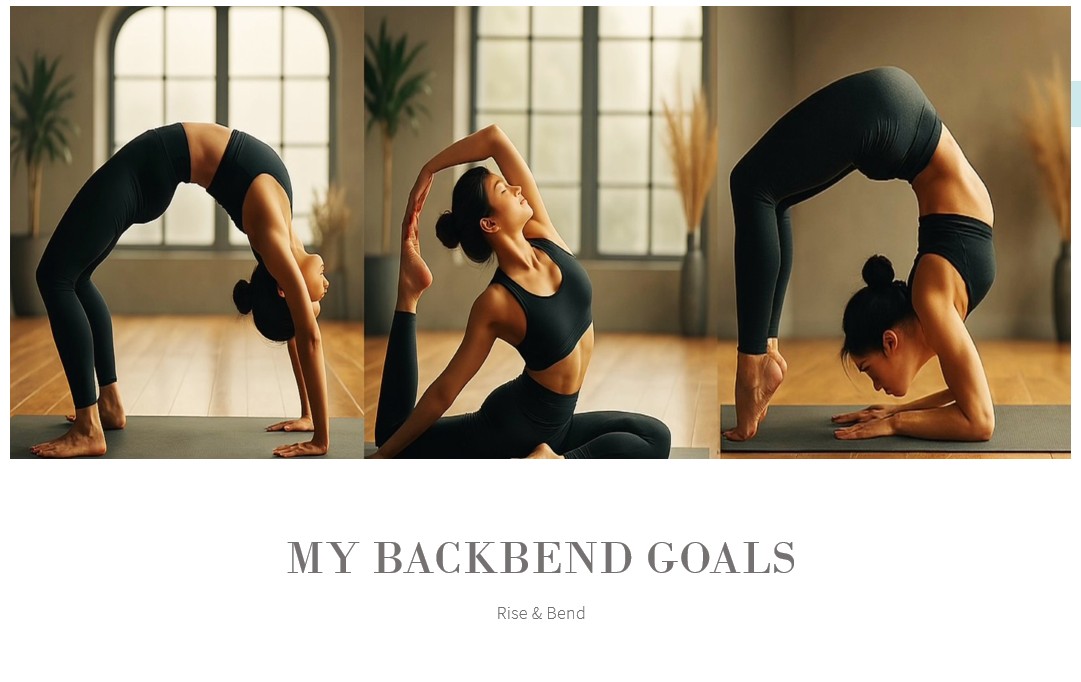Advanced Backbend Poses and How to Master Them
As an intermediate yogi, I’ve gained confidence in foundational backbends and am now setting my sights on more advanced poses. These postures challenge flexibility, spinal strength, and shoulder openness, making them both a test of skill and an opportunity for growth.
While advanced backbends can be demanding, using props, practicing modifications, and progressing mindfully ensures a safe and enjoyable journey. Here’s how I’ve been working towards these deeper backbends and how you can too. Whether you’re practicing at home or in a studio.
- Wheel Pose
A classic deep backbend that opens the chest and strengthens the back body. 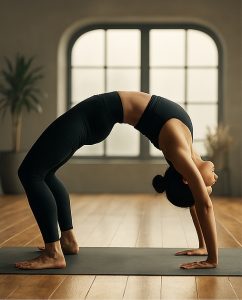
How to Get Into It:
- Begin in Bridge Pose.
- Place your palms flat beside your ears and keep your feet hip-width apart.
- On an inhale, lift your hips and chest to enter the full Wheel Pose.
Modifications & Props:
- ◾ Blocks under hands: Raise the floor to reduce wrist strain and make lifting easier.
- 🌀 Yoga wheel: Use the wheel to gently roll down the spine for preparation.
- 🎗Strap around thighs: Prevent knees from splaying out during the pose.
- King Pigeon Pose
This pose combines deep hip-opening with an elegant backbend and shoulder extension. 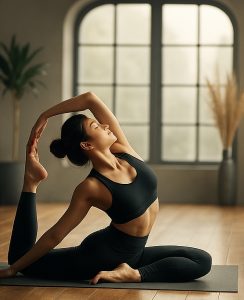
How to Get Into It:
- Start in Pigeon Pose, bending your back leg.
- Reach your arms overhead to catch the back foot, gradually drawing it toward your head.
Modifications & Props:
- 🎗 Strap around back foot: Helps bridge the gap if shoulder mobility is limited.
- ◾ Block under hip: Provides support and ensures the pelvis stays level.
- 🧱 Wall support: Press the back foot against a wall for additional stability.
- Scorpion Pose
A powerful pose requiring balance, strength, and spinal flexibility in a dramatic forearm stand. 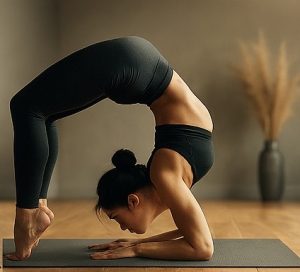
How to Get Into It:
- Begin in Forearm Stand.
- Slowly bend your knees, engaging your core and arching your back to lift your legs overhead.
Modifications & Props:
- 🧱 Wall support: Practice facing the wall for greater control.
- 👥 Spotter or teacher: Provides guidance and ensures alignment.
- 💪 Strength drills: Build foundational strength with Dolphin push-ups and forearm planks.
- Supported Backbends with a Yoga Wheel
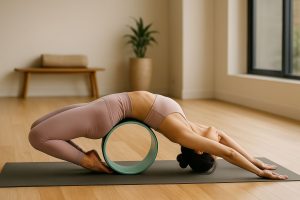
An excellent way to explore deeper chest openers or inversions with added support.
How to Use It:
- Sit in front of the yoga wheel, then gently lean back to let it roll along your spine.
- For deeper stretches, extend your arms overhead or use blocks for support.
Benefits:
- Relieves tension in the thoracic spine.
- Builds confidence in heart-opening movements.
- Provides dynamic support for transitions into deeper poses.
💡 Tips for Advancing Safely
- Warm up thoroughly: Prioritize shoulder, hip, and spine openers.
- Focus on stability first: Flexibility follows strength and control.
- Be consistent: Progress takes time so embrace the journey.
- Seek guidance: A teacher’s adjustments can accelerate safe progression.
- Work with a teacher: Hands-on guidance can make a big difference in alignment and safety.
💬 Join the Conversation
Which advanced backbend are you excited to try? Have you experimented with props like yoga wheels, blocks, or straps in your practice? Share your experience and join me in this journey together to grow stronger and more flexible! ❤️
Previous post – Unlocking Strength and Flexibility: A Posture and Flexibility Transformation – Major Online Business and Marketing
